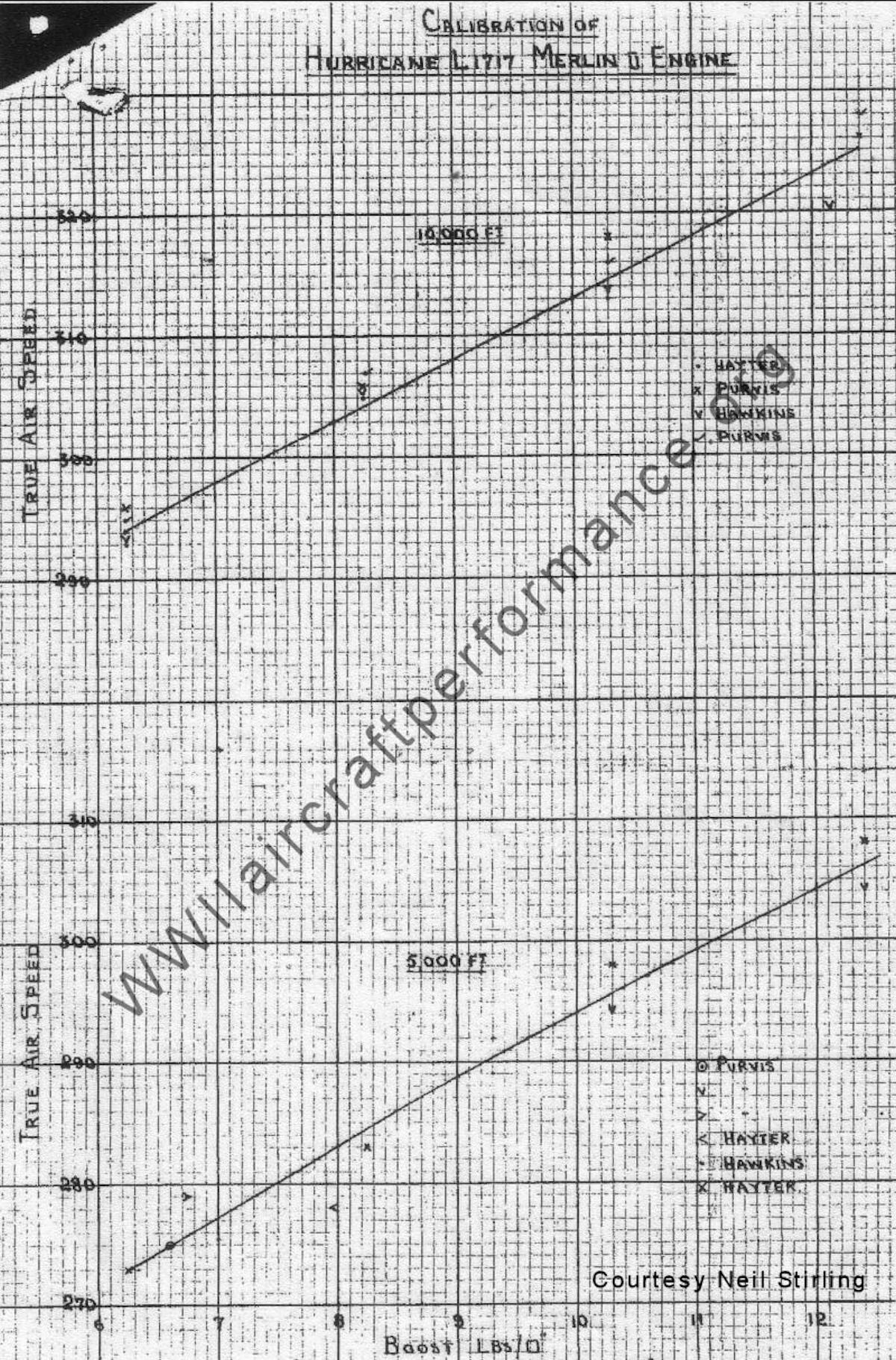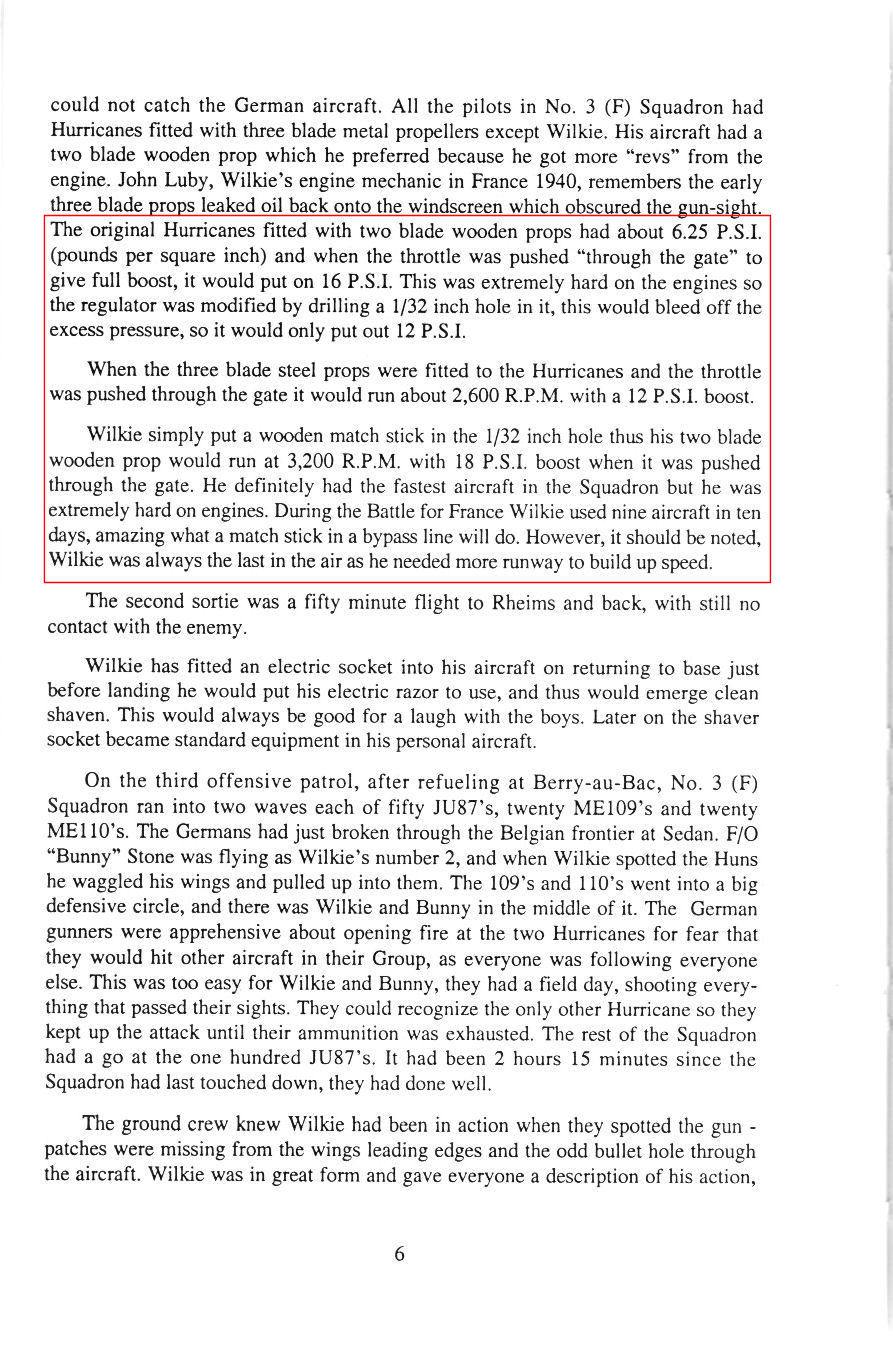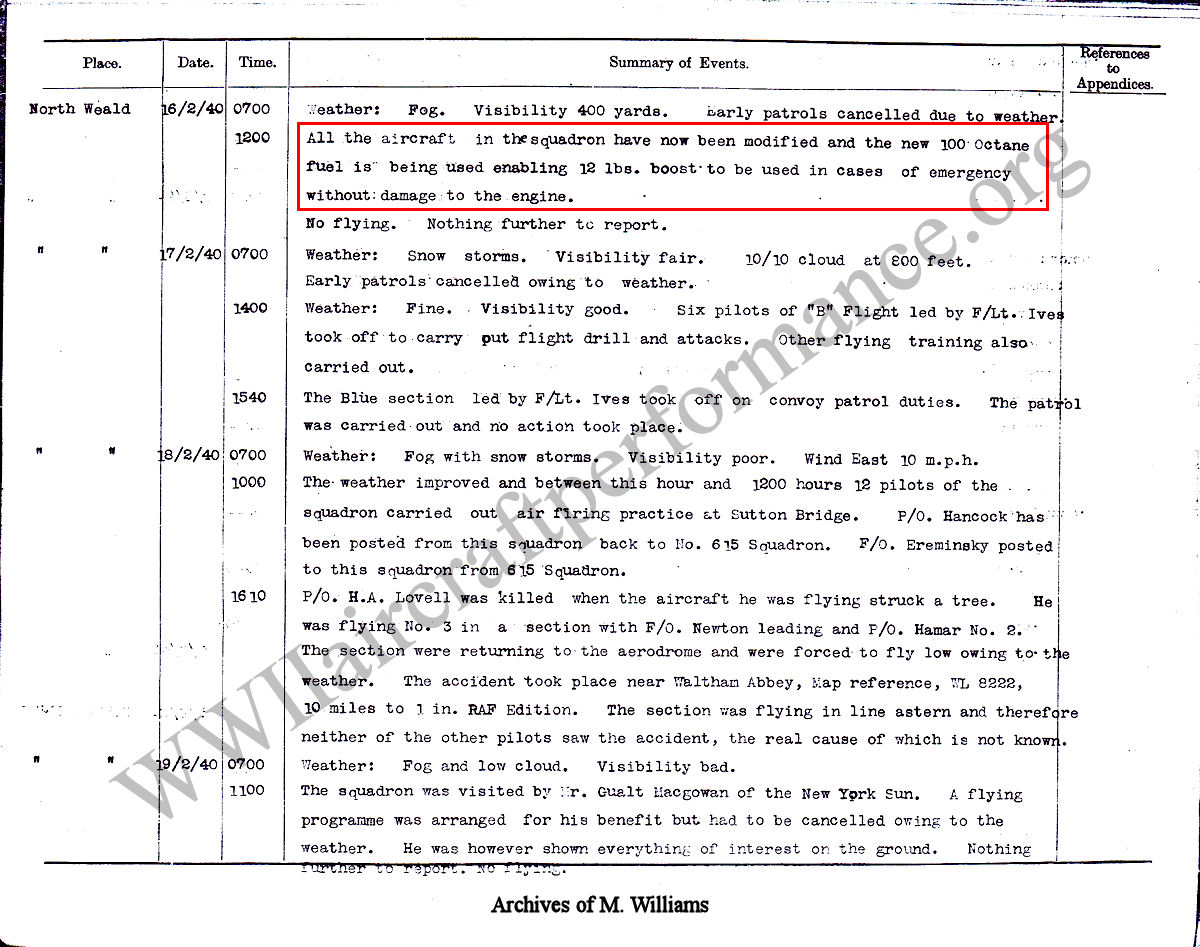
 |
|
#71
|
|||
|
|||
|
The 12Lb Boost lines and +16Lbs are computed projections of performance I believe. 12lbs we know was available on the MKI. 16Lbs was not available/used in the MKI. I think the first operational use of +16Lbs was on the Spit MKV with Merlin 45
|
|
#72
|
|||
|
|||
|
It does say Boscome (Aeroplane and Armament Experimental Establishment), so I would say it was from testing done there.
The source for the graphic is on the graphic. http://www.spitfireperformance.com/ |
|
#73
|
|||
|
|||
|
Quote:
Quote:
 Note how closely the performance increases match the previous data for the Spitfire I at 6 and 12lb boost. I haven't read of the Spitfire I/II using 16lb in combat, but they must have run the Merlin III at 16lb boost to certify it for the Sea Hurricane, and those tests are just as easy to do in a Spitfire with a Merlin III. |
|
#74
|
|||
|
|||
|
The following passage from Wing Commander Royce Wilkinson's book is interesting and germane to the discussion.

|
|
#75
|
|||
|
|||
|
Wow, nine aircraft in ten days?
Probably these guys flew quite a lot during those days, let's take a guess and say 3 to 5 sorties per day (depending on distances/time flown), this gives us nine "busted" engines for 30 to 50 sorties total for these 10 days. Now, divide the amount of engines used up by the sorties and you get a per-sortie engine failure rate of 18% to 30% for going above the limits. In other words, almost one in five to one in three sorties results in a busted engine, not exactly a trivial risk. Pretty interesting reference there to get a feel of how easy it was to break an engine under operational conditions, thanks for linking it. |
|
#76
|
|||
|
|||
|
Quote:
 
|
|
#77
|
||||
|
||||
|
Quote:
The engineers clearly disagree with this operator in the instruction under entry number 11 for AP 1590B/J.2-W Merlin II and III Use of +12lbs Boost Pressure - Alterations and Precautions. Paragraph 11 clearly states: The use, in an emergency, of this high boost pressure is a definite overload condition on the engine.... Last edited by Crumpp; 09-24-2011 at 03:59 AM. |
|
#78
|
|||
|
|||
|
Quote:
I suspect that the cutout was originally provided in case the ABC failed, so that the pilot would still have access to direct throttle control. The cutout modification was basically a hack which allowed the cutout to function as a combat power detent without extensive modification to the rest of the cockpit. Later Spitfires didn't have a boost control cutout, but were instead fitted with a gated throttle which allowed the independent setting of the various engine ratings, including the combat rating. They also had double-acting ABC instead of single acting ABC, which meant that the throttle behaviour was a bit different. This is explained in the relevant AP from the period (I forget the number now, but it's been linked to in quite extensively in this forum). |
|
#79
|
|||
|
|||
|
Quote:
As such, both engine and airframe life were expected to be no more than one sortie, and it was therefore perfectly reasonable to give them a Viking funeral. |
|
#80
|
||||
|
||||
|
Quote:
Even a disposable fighter is worthless if it cannot fly to a target and fight. Last edited by Crumpp; 09-24-2011 at 04:21 PM. |
 |
|
|